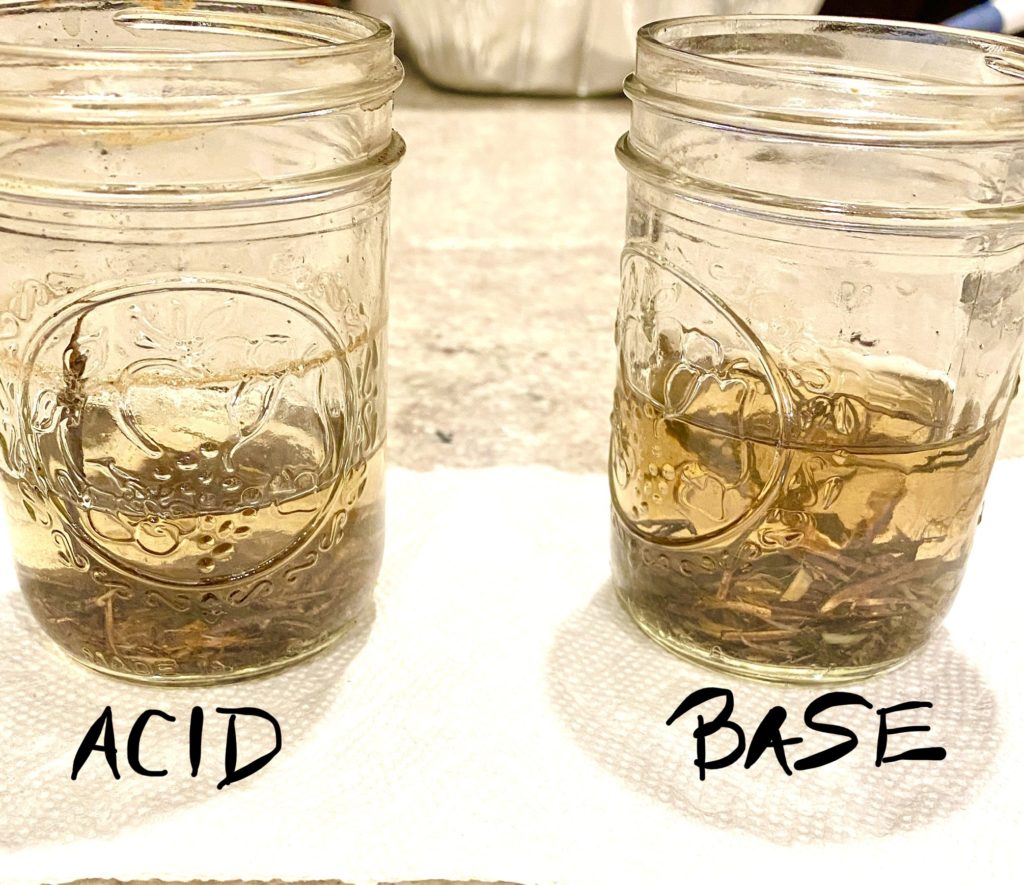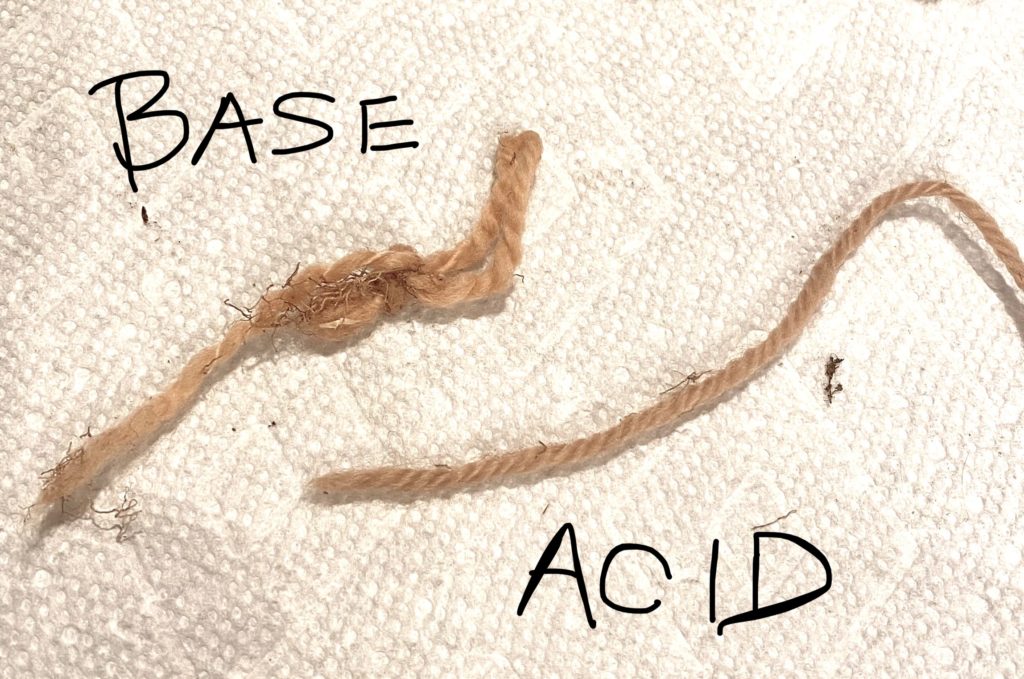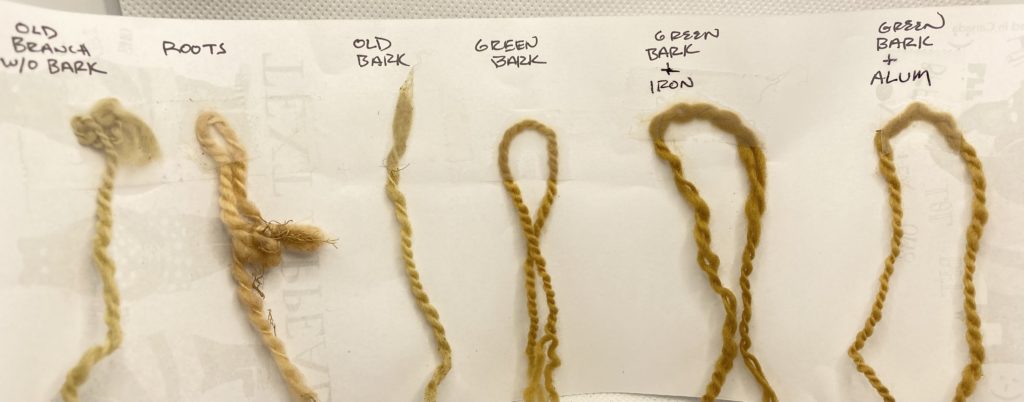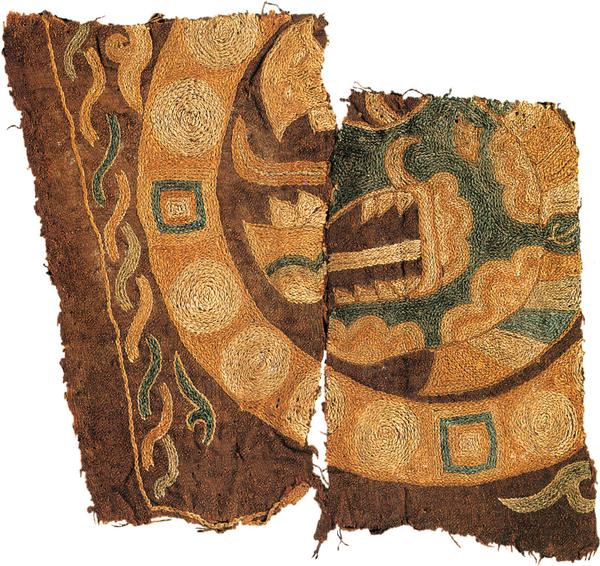On Mondays, my daughter has two straight hours of hockey practice in Concord, New Hampshire. It’s COLD in that arena- but it is right on the Merrimack river, so I have lately been wandering the riverbank, looking at plants to maybe dye with (Wild grapes! Bedstraw! A bunch of What The Heck Is This Plant?). I use an app on my phone called PlantSnap to try and figure out what stuff is- it is not the most accurate thing. One plant I snapped gave me the result Barberry (it’s actually invasive bittersweet, apparently)- but I knew that was wrong.. but I also knew I’d seen the barberry plant in my wandering through the woods. Lo and behold, Barberry (Berberis vulgaris and related species) were documented as sources of yellow dye from China during the Ming and Qing Dynasties (1368-1644 CE and 1636-1912, respectively) (Cardon, 2007; Haji 2010; Han, 2016).
Well, of COURSE I was going to go harvest some! However, the documentation I have found is… confusing and contradictory, to say the least. Cardon reports the dyesource is ‘The root and the wood, stripped of bark’ for Berberis thunbergii; Han reports the dyesource is Berberis amurensis but does not list a plant part and Haji specifically mentions roots of B. vulgaris. Initial investigations, therefore, were carried out using the plant parts listed by Cardon and Haji- roots, and wood stripped of bark. Naturally, I also have NO IDEA which species of Berberis I found- it could be a wilded B. vulgaris or other import, or it could be the native North American B. Canadensis.
I got both wood and roots, and started with the roots. After washing the dirt off them, I crushed them in my mortar and boiled them in water. My first dye attempt in neutral pH was.. pink? Dangit, I am looking for YELLOW. So, I changed the pH to 8-9 with ammonia; MORE pink! Dropped the pH to acidic with vinegar, vaguely yellowish but not really what I was looking for at all. Dumped out that batch and carefully peeled a stick of its bark, chopped it, boiled it, and- absolutely NOTHING happened. Left it on the pellet stove overnight to warm and… NOTHING STILL. :/ Ok, roots make pink and barkless wood does nothing… ok, let’s try the bark itself! Found a couple craft websites that mentioned bark, so away we go.
First, I tried old bark off of dead branches (trying to collect responsibly!). That result was sub-optimal. I went back and gathered some offshoots that were green.
In boiling water/simmering on the pellet stove, I used equal amounts of green peeled Berberis bark in acid water and basic water. After 24 hours, the basic solution was distinctly more yellow. I let the solutions simmer/steep for another day or so to see what color developed from the solutions (and that gave me enough time to spin more yarn to test with!).

Peeled (old) Bark Solution 
Root Results

The results of my various tests- note that the roots color on this photo is less pink than in reality; the photo above is closer in color. However, the other samples are close to actual color.
Discussion
Whatever species of Berberis I found does not dye well with the wood or the roots, contrary to published information. However, green bark from fresh shoots dyes adequately with basic solution and with/without alum pre-mordant (Berberis is considered to be a dye type that is substantive and doesn’t require pre-mordanting). More work needs to be done to find the optimal concentration for a less orangey-yellow. Additionally, since the extant dyed materials studied were largely silk, I will need to obtain some undyed silk to test this dye with to see what the color differences are.

Tang Dynasty embroidery, yellows identified as berberine-based and safflower-based dyes.
Cardon, D., 2007. Natural Dyes: Sources, Traditions, Technology and Science, Archetype Publications, 801 pages.
Haji, A., 2010. Functional Dyeing of Wool with Natural Dye Extracted from Berberis vulgaris Wood and Rumex Hymenosepolus Root as Biomordant. Iran Journal of Chemistry and Chemical Engineering, V. 29 N. 3, pp 55-60.
Han, J., 2016. The Historical and Chemical Investigation of Dyes in High Status Chinese Costume and Textiles of the Ming and Qing Dynasties (1368-1911). Master’s Thesis, available through University of Glasgow College of Arts. 374 pages.